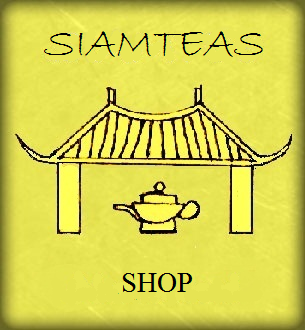
- SIAM TEABLOID
- SIAM TEABLOID Vol. 2019
- Siam Tea Blog Vol. 2018
- Jan 2018 – Ancient Trade Routes of Tea from China to Europe, Russia and Middle East
- March 2018 : The Chen’s – Wuyi Yancha and Bohea Tea Cultivation in 3rd Generation
- Aug 2018 : Tea from Darjeeling – Between Colonial Roots and New Identity
- Nov 2018 : Artisan Tea vs. Mass Tea – Pleading for a Holistic Approach
- SIAM TEABLOID Vol. 2017
- SIAM TEABLOID Vol. 2016
- Dec 2016 : The World Map of Tea – Painted by Artist
- Sept 2016: Ingredients of Tea – Compounds and Active Substances
- July 2016: The Development of Tea as a Beverage in China
- July 2016: What actually is tea?, Part 2 – Tea Plant Varieties and Cultivars
- July 2016: What actually is tea? Pt 1 – Camellia Sinensis vs. “tea-like” products
- June 2016 – Vietnamese Tea – Rebirth of an Ancient Tea Culture
- April 2016: Single Variety, Single Origin, Single Picking Tea vs. Blends – A Question of Attitude
- March 2016: The Ancient Tea Road – from Yunnan to Tibet
- Jan. 2016: Wuyi Mountains – Home of Rock Teas
- SIAM TEABLOID Vol. 2015
- Nov 2015: Healthy Tea, Healthy Environment – The SiamTeas Health and Environment Policy
- Oct. 2015: Leaf Grade, Picking Standard, Processing Standard – Objective Tea Quality Evaluation Criteria
- Sept. 2015: SiamTeas & Siam Tea Shop 2015/2016 – The Next Level
- April 2015: Doi Mae Salong – New Mecca for Tea Travelers in North Thailand
- March 2015: Japanese Green Tea – History and Present Face
- Feb 2015: The Taste of Tea, Perception and Description
- Jan 2015: ITMA Tea Master Course at Doi Mae Salong, North Thailand – The Recap
- SIAM TEABLOID Vol. 2014
- Dec 2014: “10 Great Teas of China” – the ‘Who is Who’ of Chinese Teas (in need of an upgrade)
- Nov 2014: Anji Bai Cha and the “Da Guan Cha Lun” – When (Tea) Legends Become True
- Oct 2014: The True Value of Tea – A Holistic or ‘Qi’ Approach
- September 2014: New Tea School in Doi Mae Salong
- July 2014: Mystery Pu Erh Tea – A Key to Yunnan’s Oldest Tea Tradition
- June 2014: The Globalization of Tea Cultivars – Trends and Perspectives
- March 2014: Spring Tea and Airplanes – A Year’s First Tea
- Feb 2014: German Language – Key To One Of The Greatest Tea Markets Worldwide
- Jan 2014: Long Jing “Dragonwell” Green Tea – Authentic & Wild
- SIAM TEABLOID Vol. 2013
- Dec 2013: Thoughts About Christmas – Tea as a Key to Togetherness
- Nov 2013: The Tea Gardens of Ban Hin Taek – Swords to Ploughshares?
- Oct 2013: Tie Guan Yin Oolong Tea – Qingxiang vs. Chunxiang / Lapsang Souchong, Zheng Shan Xiao Zhong, Jin Jun Mei – All the Same?
- Sept 2013: The Plan & Tie Kuan Yin / The “Qi” of Tea – Wild Bai Mu Dan and Artisan Yunnan Black & Golden Needles
- Tea Preparation / Tea Ceremony
- Tea Processing
- August 2013: The History of Tea
- Thailand
- Tea cultivation in Thailand
- Teas from Thailand
- Teas from North Thailand: Camellia Sinensis
- DMS Ruan Zhi Oolong No. 17 – The Queen of Thai Oolong Teas
- DMS “Cha Nang Ngam” Oriental Beauty Oolong Tea – North Thailand’s “Dong Fang Mei Ren”
- Doi Mae Salong Jin Xuan Black Pearls
- Si Ji Chun Four Seasons Oolong Tea – Four Seasons like Spring
- “Bai Yai” – The Old Tea Tree of North Thailand
- Jin Xuan Oolong (Taiwan Tea Cultivar No. 12) – the most versatile of Thai-Oolongs
- Jin Xuan Hoarfrost (Winter Harvest) Oolong Tea – the exception from the rule
- Thai Herbal Teas / Infusions
- Tea Creations – Tea & Herbs
- Teas from North Thailand: Camellia Sinensis
- Doi Mae Salong
- Journey to Doi Mae Salong
- Doi Mae Salong – Center of Tea Cultivation in Northern Thailand
- Doi Mae Salong – The New Mecca for Tea Travelers
- Tea Production in Doi Mae Salong, North Thailand: the picking and processing of our Oolong Nr.12 Jin Xuan
- Videos by SiamTeas: Doi Mae Salong Tea Production / Tea Fair / Tea Ceremony
- Doi Tung
- Doi Wawee
- Project Shan Tea
- My Little Tea School – The ABC of Tea
- Lesson 1 : What Is Tea? – The Tea Plant, Camellia Sinensis
- Lesson 2 : (What Makes) The Tea in Your Cup
- Lesson 3 : Origin – What does it tell about your tea?
- Lesson 4 : Tea and Terroir
- Lesson 5 : (Your) Tea and (Its) Cultivar
- Lesson 6 : (Styles of) Tea Cultivation
- Lesson 7 – (Parameters of) Tea Plucking
- Lesson 8/1 – History of Tea Processing
- Lesson 8/2 – (Parameters of) Tea Processing
- Lesson 8/3 : Green Tea Processing
- Lesson 8/4 : Oolong Tea Processing
- Lesson 8/5 : Black Tea Processing
- Lesson 8/6 : White Tea Processing
- Lesson 8/7 : Yellow Tea Processing
- Lesson 8/8 : Dark Tea / Pu Erh Tea Processing
- Lesson 9/1 : Tea Preparation (1) – Parameters of Tea Preparation
- Lesson 9/2 : Tea Preparation (2) – Contexts and Purposes of Tea Preparation
- Lesson 9/3 : Tea Preparation (3) – Standards of Tea Preparation
- Lesson 10/1 : Tea Cultures of the World (1) – Spread of the Tea Plant in China and South East Asia
- Lesson 10/2 : Tea Cultures of the World (2) – Development of the Chinese Tea Culture
- Lesson 10/3 : Tea Cultures of the World (3) – Spread of the Tea Culture in Asia
- Lesson 10/4 : Tea Cultures of the World (4) – Ancient Trade Routes of Tea from China to Europe, Russia and Middle East
- Lesson 10/5 : Tea Cultures of the World (5) – History of Tea Culture in Japan
- Shop
 .
.
•







